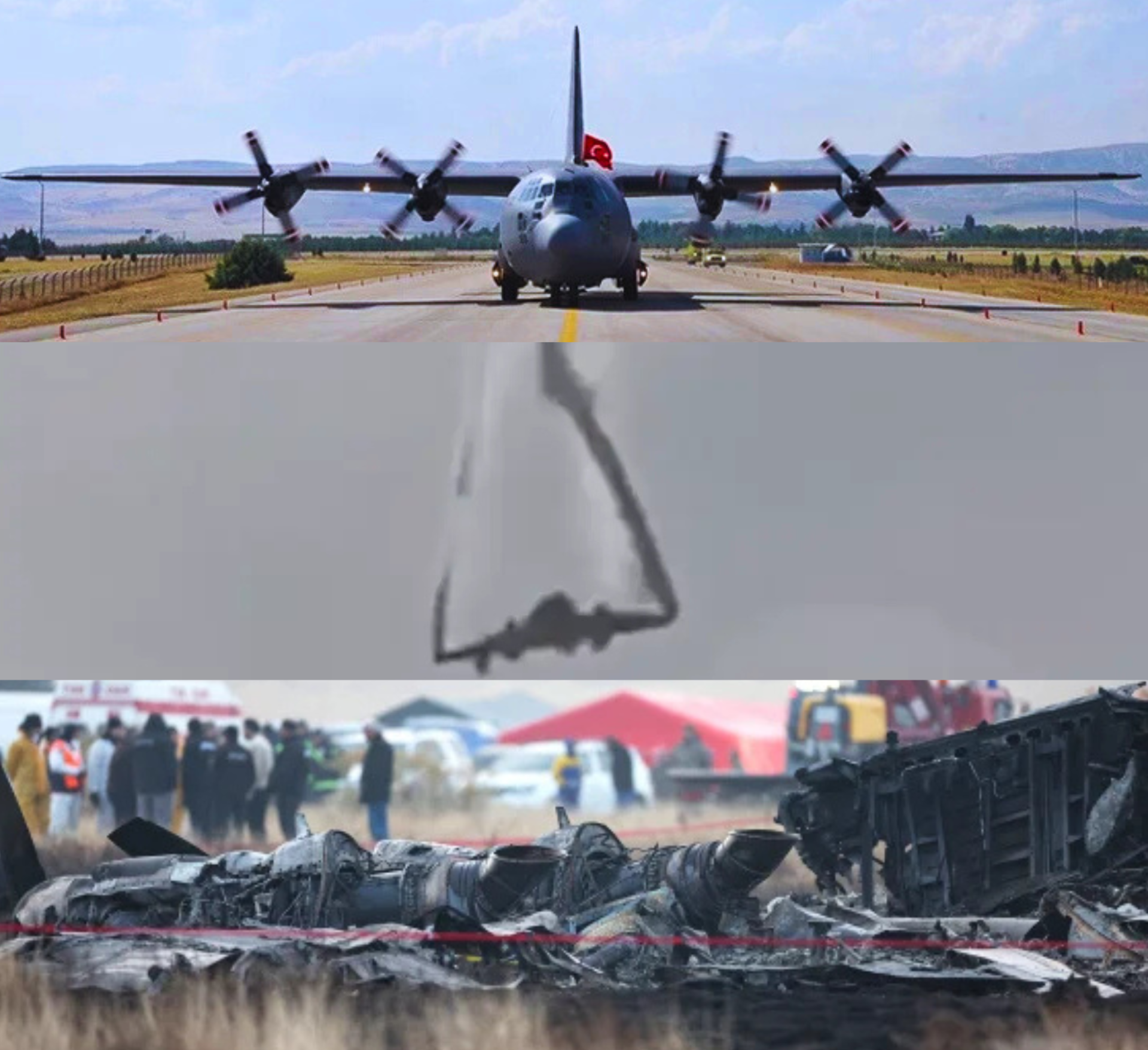A Turkish Air Force C-130 Hercules military cargo plane returning from Azerbaijan’s so-called “Victory Day” parade in Baku, an event glorifying the 2020 ethnic cleansing of Armenians in Artsakh (Nagorno-Karabakh), a continuation of the same genocidal policies Armenians have faced for over a century, crashed Tuesday in Georgia’s Sighnaghi region, killing all 20 servicemen aboard. The aircraft went down in a mountainous area near the Georgia–Azerbaijan border while en route back to Turkey, intensifying scrutiny of Ankara’s deepening military cooperation with Baku and the dangerous militarism that has enabled Azerbaijan’s campaign against the Armenian people, and of Turkey’s continued complicity in it, reports Zartonk Media.
The aircraft had taken off from Ganja Airport in Azerbaijan and was returning to Turkey when it lost contact. Video footage showed the aircraft descending with smoke trailing before impact.
Connection to Baku Parade
According to the Associated Press (AP), the unit aboard had participated in Turkey’s military delegation at Azerbaijan’s so-called “Victory Day” parade in Baku on November 8, marking the fifth anniversary of the 2020 Artsakh war. The event, celebrated by Ankara and Baku as a “victory,” commemorated a campaign that resulted in the mass displacement and ethnic cleansing of the indigenous, millennia-old Armenian population of Artsakh, an atrocity condemned by Armenian communities worldwide and largely ignored by the international community.
The parade itself served as a state-sponsored display of militarism and denial, openly celebrating a campaign that uprooted an ancient Armenian homeland while erasing its cultural and religious heritage.
Turkey’s confirmed military presence at the parade included Turkish commandos, F-16 flyovers, and senior defense officials. The participation underscored Ankara’s direct military involvement and symbolic solidarity with Baku, highlighting its role as the principal backer of Azerbaijan’s 2020 war against the Armenians of Artsakh.
The unit’s return flight from Azerbaijan firmly links the crash to Ankara’s ongoing military coordination with Baku, further intensifying scrutiny of the Ankara–Baku defense axis. While Ankara has not disclosed the aircraft’s cargo, its type, route, and timing make the mission significant. The C-130 is designed to carry troops, weaponry, and sensitive military supplies. Departing from Ganja, a known hub for Turkish logistical operations, the flight’s purpose has raised questions about whether it was engaged in more than simple personnel transport.
Composition of the Crew and Military Personnel
The Turkish Defense Ministry confirmed that all 20 aboard were members of the Turkish Air Force, forming a full operational detachment spanning multiple ranks. The group included lieutenant colonels and majors in command, first lieutenants as co-pilots and navigators, and non-commissioned officers at the ranks of sergeant major, staff sergeant, and specialist sergeant responsible for flight engineering, communications, and logistics.
Authorities have recovered 19 bodies and continue searching for the final serviceman. President Recep Tayyip Erdogan referred to the fallen as “martyrs” and offered condolences to their families as Turkey declared a national mourning period.
Background on the Aircraft and Its Mission
The Lockheed C-130 Hercules is a tactical air-lifter used for transporting troops, vehicles, heavy equipment, and munitions during combat and support missions. Turkey’s C-130 fleet, composed of legacy C-130B/E models and modernized variants, forms a central part of Ankara’s regional military operations. These aircraft frequently conduct transport missions between Turkey and Azerbaijan, particularly during military build-ups and joint exercises. Open-source flight data has shown a growing pattern of such flights during times of regional tension, underscoring the aircraft’s importance in sustaining Ankara’s logistical and defense coordination with Baku.
Turkey’s Military Support to Azerbaijan
Turkey and Azerbaijan maintain a close military alliance that has reshaped the balance of power in the South Caucasus. Ankara’s supply of Bayraktar TB2 combat drones and Roketsan MAM-L precision munitions, used extensively during the 2020 Artsakh war, played a decisive role in Azerbaijan’s operations, according to defense analysts and international research organizations.
Analysts note that Ankara’s direct military and intelligence assistance not only ensured Azerbaijan’s victory but also facilitated the destruction of Armenian self-governance in Artsakh and the forced expulsion of its civilian population.
At the same time, a surge in Turkish military cargo flights, including C-130s and A400Ms, was documented between Turkey and Azerbaijan, particularly via Baku and Ganja. These flights became a key component of the supply line that sustained Azerbaijan’s offensive.
This established pattern has led many observers to regard Turkish military flights from Azerbaijan with concern, particularly those involving heavy-lift aircraft capable of transporting munitions, drones, and support equipment.
Regional and Political Context
President Erdogan confirmed the incident and said an investigation had been launched, as Turkish and Georgian authorities coordinated search and rescue operations with Azerbaijani counterparts. Georgia’s Ministry of Internal Affairs opened a criminal case under Article 275 of the Georgian Criminal Code, covering violations of flight-safety regulations resulting in loss of life.
The crash comes amid heightened regional tension as Armenian communities worldwide continue to condemn Turkey’s deepening military alliance with Azerbaijan. The incident has renewed calls for transparency around Turkish-Azerbaijani defense cooperation, particularly regarding the use of dual-purpose aircraft for missions that blur the line between transport and active military support. Investigators have recovered the black box (flight data recorder) and continue examining wreckage at the remote mountainous crash site, while Turkish and Georgian authorities work to account for the final body.


